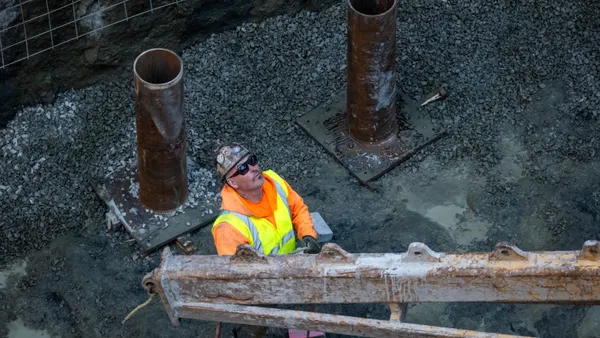Dive Brief:
-
Of for-sale homes listed in the 30-largest U.S. metros last year, only 18% were affordable to Hispanic families and 14% were affordable to African-American families both earning the median income, according to Redfin. That’s compared to 30% for median-income white families.
-
In Denver, Los Angeles, Portland, OR, San Francisco, San Diego and Phoenix, fewer than 5% of for-sale homes were affordable for median-income Hispanic and African-American households last year. Denver posted the smallest housing affordability gap between racial groups while Minneapolis had the largest gap.
-
St. Louis was the only major metro to become more affordable for Hispanic and African American households, possibly because the area did not see a major shift in overall middle-class affordability.
Dive Insight:
While rising rents and home prices can be a drag on households hoping to save up for a down payment, Hispanic and black households, in particular, face challenges including being less likely to be approved for a conventional home loan than white or Asian borrowers, as well as the residual effects of the housing market crash that targeted and left many people of color saddled with subprime mortgages.
What's more, homeowners in predominantly black neighborhoods are twice as likely to be in negative equity on their mortgages compared to owners in white neighborhoods. Taken together, these barriers have helped keep the homeownership gap between white and black households largely consistent for the past century.
People of color also face barriers to homeownership when it comes to the mortgages they're offered, according to a February 2016 study from the National Bureau of Economic Research. The report found that race and ethnicity were major determinants in whether borrowers got a high-cost loan, with black and Hispanic borrowers being offered high-cost mortgages at a 105% and 78% likelihood, respectively.
Still, some industry groups are beginning to face repercussions for race-based housing discrimination, with Fannie Mae facing a lawsuit in a California federal district court in December after U.S. housing organizations alleged the government-backed lender did not maintain and list foreclosures in predominantly black and Hispanic neighborhoods at levels equal to those in majority-white neighborhoods.
The potential for homeownership gains among households of color shouldn't be overlooked, according to Freddie Mac.
A separate report from the Hispanic Wealth Project and the National Association of Hispanic Real Estate Professionals found that Hispanics will be a key bolster for the housing market, with the number of Hispanic homeowners growing by 2.8 million since 2000 to 7 million in 2015, compared to an 85,000-person slide in ownership by non-Hispanics during the same period. According to the Urban Institute, Hispanic households are expected to comprise more than half of U.S. households formed between 2020 and 2030.












